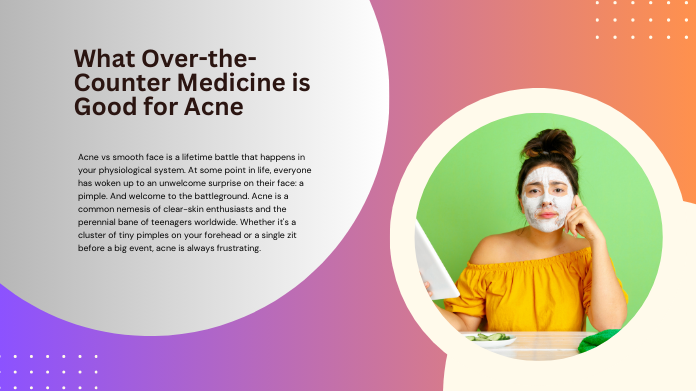How to Use Clindamycin for Acne a Comprehensive Guide
Clindamycin, a powerful antibiotic commonly used to treat various bacterial infections, has also emerged as a promising solution for acne-prone individuals. Acne, the bane of many people’s existence, is often caused by the overgrowth of Propionibacterium acnes bacteria on the skin. This leads to inflammation and clogged pores, resulting in those pesky pimples we all dread.
However, clindamycin works its magic by inhibiting the growth of these bacteria and reducing inflammation, ultimately helping to clear up acne. So, clindamycin may be a good addition to your skincare routine if you’ve tried everything for stubborn acne. In this article, we will delve into how you can use clindamycin for acne removal.
What is Clindamycin?
Clindamycin is a powerful antibiotic that has proven effective in treating various bacterial infections. It belongs to the lincosamide group of antibiotics and works by inhibiting protein synthesis in bacteria, ultimately killing them off. The difference between Clindamycin and other antibiotics is its remarkable capability to effectively penetrate deep into various tissues. This unique characteristic renders Clindamycin especially valuable in treating infections in areas like the bones or teeth.
Clindamycin is effective against certain bacteria responsible for causing skin infections, including acne. It helps to eliminate the bacteria that contribute to acne breakouts, promoting clearer skin over time. This antibiotic comes in various forms, including gels, lotions, creams, and oral capsules. Therefore, the usage will depend on the severity of your condition and the guidance provided by a healthcare professional.
Role of Clindamycin in Acne Treatment

Clindamycin plays a crucial role in treating acne by effectively targeting various aspects of the condition. Here are some detailed explanations of how Clindamycin works to combat acne:
Reduces inflammation: One of the primary benefits of Clindamycin is its ability to reduce inflammation associated with acne. Inflammatory responses often lead to redness, swelling, and discomfort. By calming the skin’s inflammatory response, Clindamycin helps to alleviate these symptoms and promote overall healing.
Inhibits bacterial growth: Acne is commonly caused by an overgrowth of Propionibacterium acnes bacteria on the skin. Clindamycin acts by inhibiting the growth of these bacteria, reducing their numbers and minimizing their impact on acne development. By curbing bacterial proliferation, it helps to prevent new breakouts and promote clearer skin.
Controls breakouts: By regulating bacterial populations on the skin’s surface, Clindamycin plays a vital role in controlling acne breakouts. It disrupts the cycle of bacteria accumulating within hair follicles and clogging pores, leading to fewer blemishes forming over time.
Clears existing acne lesions: In addition to preventing new breakouts, Clindamycin can help remove existing acne lesions. It works by reducing inflammation and targeting the bacteria within pimples or cysts, allowing them to heal faster and promoting smoother skin texture.
Complements other acne treatments: Combining Clindamycin with other topical or oral medications can enhance overall acne treatment outcomes. It may be prescribed alongside benzoyl peroxide, retinoids, or oral antibiotics as part of a comprehensive approach. By utilizing multiple modes of action, this combination therapy helps target different aspects of acne formation for more significant improvement.
How to Use Clindamycin for Acne Into Your Skincare Routine
Consult With a Dermatologist
Before using Clindamycin in your skincare routine, it is crucial to seek guidance from a dermatologist. Consult with a certified dermatologist about Clindamycin and get individualized skincare recommendations. They can evaluate your specific skin condition and provide you with a suitable treatment plan. Besides, they will consider factors such as the severity of your acne, other medications you may be using, and any potential allergies or sensitivities.
Cleanse Your Face
Start by cleansing your face using a gentle cleanser suitable for your skin type. This helps to remove dirt, excess oil, and impurities, preparing the skin for the application of Clindamycin. Use a mild cleanser like Cetaphil or Neutrogena to wash your face. Remember to cleanse your face twice daily, once in the morning and once at night, before applying Clindamycin.
Apply a Thin Layer
Using clean fingers or a cotton swab, apply a thin layer of Clindamycin gel or lotion directly onto the affected areas of your skin. Avoid applying too much product, which may lead to unnecessary dryness or irritation. After cleansing, take a pea-sized amount of Clindamycin gel and gently spread it across your forehead, cheeks, chin, and other areas prone to breakouts.
Follow Dermatologist’s Instructions
Clindamycin is generally used once or twice daily, as your dermatologist prescribes. It is crucial to follow their instructions precisely to achieve optimal results and avoid potential side effects. If your dermatologist prescribed applying Clindamycin in the morning and evening, stick to this schedule consistently for the recommended duration of treatment.
Use Sunscreen
Apply a broad-spectrum sunscreen with at least SPF 30 during the day while taking Clindamycin to prevent UV damage and sensitivity. After applying Clindamycin, follow up with a sunscreen like EltaMD UV Clear to shield your skin from harmful UV rays.
Moisturize Appropriately
While Clindamycin targets acne-causing bacteria and inflammation, it can sometimes cause dryness or flakiness in the treated areas of the skin. To counteract this, use a lightweight, non-comedogenic moisturizer after applying Clindamycin to keep the skin hydrated and balanced.
Avoid Excessive Scrubbing or Harsh Products
When dealing with acne-prone skin, it may be tempting to use aggressive scrubs or harsh skincare products to clear blemishes quickly. However, these can irritate the skin further and disrupt its natural balance, making acne worse. Stick to gentle and non-abrasive products. You can opt for chemical exfoliants such as salicylic acid or glycolic acid that are milder on the skin.
Be Patient
Results from using Clindamycin may not be immediate, as it takes time for acne lesions to heal and new breakouts to be prevented. Consistency is key when incorporating Clindamycin into your skincare routine. It usually takes several weeks to see noticeable improvements in your acne with consistent use of Clindamycin.
Precautions for Using Clindamycin for Acne
- Patch test before use: Before incorporating Clindamycin into your acne skincare routine, it is advisable to perform a patch test to check for any adverse reactions. Apply a small amount of the product on a discreet area of your skin and wait 24 hours to observe any signs of redness, itching, or irritation.
- Avoid contact with sensitive areas: When applying Clindamycin, avoid contact with sensitive areas of your face, such as the eyes, lips, and nasal passages. These areas are more prone to irritation and can lead to discomfort if the product comes into direct contact.
- Follow recommended dosage: It is crucial to follow your dermatologist’s recommended dosage instructions for Clindamycin strictly. Overuse or underuse can result in ineffective treatment or potential side effects.
- Avoid combining with other acne treatments unless advised: Unless specifically recommended by your dermatologist, it is generally best to avoid using other topical acne treatments simultaneously with Clindamycin. Combining multiple active ingredients may increase the risk of skin irritation and unwanted side effects.
- Use a moisturizer for dryness: Clindamycin may cause dryness or peeling, particularly during the initial stages of treatment. To counteract this, incorporate a gentle, non-comedogenic moisturizer into your skincare routine.
- Avoid prolonged sun exposure: Clindamycin can increase sensitivity to the sun, making your skin more prone to sunburns. To protect your skin from harmful UV rays, use a broad-spectrum sunscreen with an SPF of 30 or higher.
- Report any severe side effects: While rare, serious side effects like severe allergic reactions may occur when using Clindamycin. If you experience symptoms such as swelling, difficulty breathing, or hives, discontinue use immediately and seek medical attention.
Potential Side Effects and Risks
Clindamycin is a commonly prescribed antibiotic for acne treatment. It’s essential to be aware of the potential side effects and risks associated with its use. By understanding these factors, you can make informed decisions about your skincare routine.
Allergic Reactions: Some individuals may experience allergic reactions to Clindamycin. These reactions can vary in severity and may include symptoms such as itching, swelling, redness, or hives. In rare cases, a severe allergic reaction called anaphylaxis may occur, which requires immediate medical attention.
Antibiotic Resistance: Long-term use of antibiotics like Clindamycin can contribute to antibiotic resistance. This occurs when bacteria adapt and become less responsive to the medication. Antibiotic resistance makes infections more complicated and poses a global public health concern.
Pseudomembranous Colitis: A significant risk associated with Clindamycin use is pseudomembranous colitis, which is an infection caused by an overgrowth of harmful bacteria called Clostridium difficile (C.difficile). Symptoms of this condition include persistent diarrhea accompanied by abdominal pain and fever.
Impact on Gut Microbiota: Clindamycin is known to disrupt the natural balance of bacteria in the gut, potentially leading to gastrointestinal disturbances. This can result in symptoms such as stomach pain, nausea, vomiting, or diarrhea.
Conclusion
Using Clindamycin for acne treatment can be an effective way to combat breakouts and regain confidence in your skin. By following these simple steps, you can maximize the benefits of this medication. Remember to consult with your healthcare provider for personalized guidance and continue taking care of your skin beyond Clindamycin usage. With consistency and proper care, you can achieve clearer and healthier-looking skin over time.



